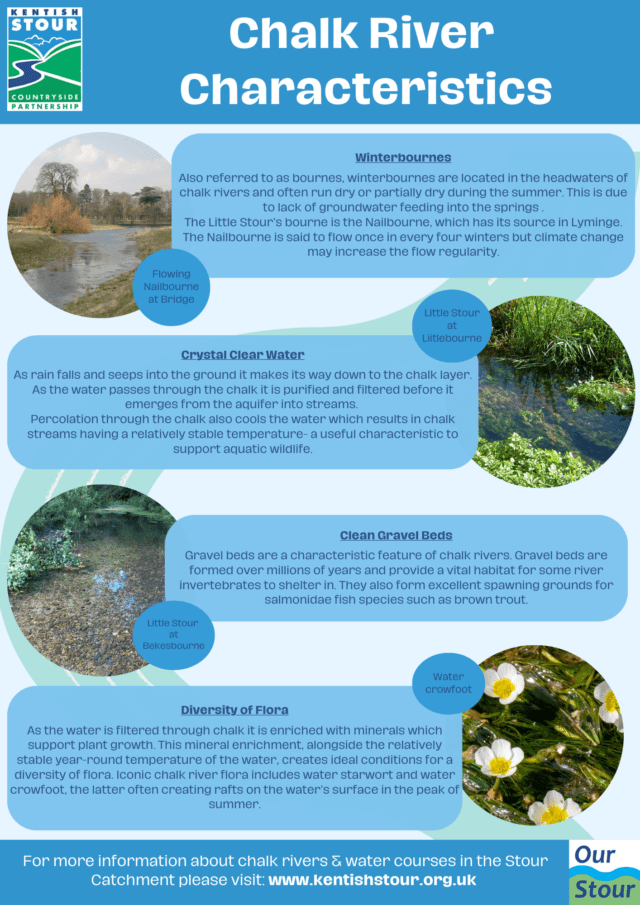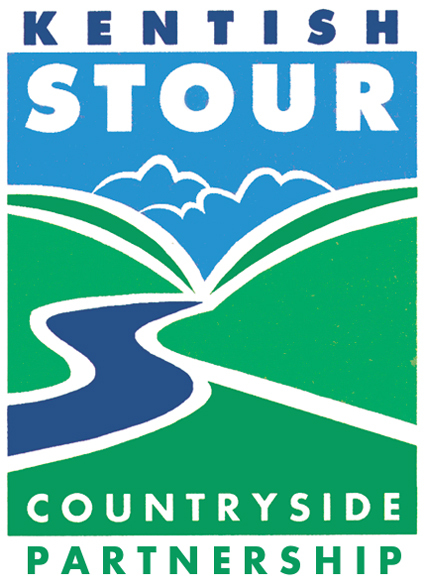Chalk Stream Origins
WHAT IS A CHALK STREAM?
What makes chalk streams different from other rivers is where their water comes from.
Most rivers are fed by water that runs off the surrounding landscape during rainfall. However, chalk streams are fed mainly by springs, from water underground. But how did that water get there?
In landscapes made of chalk, which is very porous, rainfall sinks into the chalk and is stored there. The Kent Downs are a bit like a giant sponge! A body of rock that stores water is called an aquifer. If water trickles downwards, it can only go so far, because of layers of impermeable clay under the chalk. The upper limit of the stored water is known as the water table. Its level changes, depending on how much rain there has been.
Aquifers are heavily used as a source of drinking water. Boreholes are drilled into the rock and water pumped from underground.
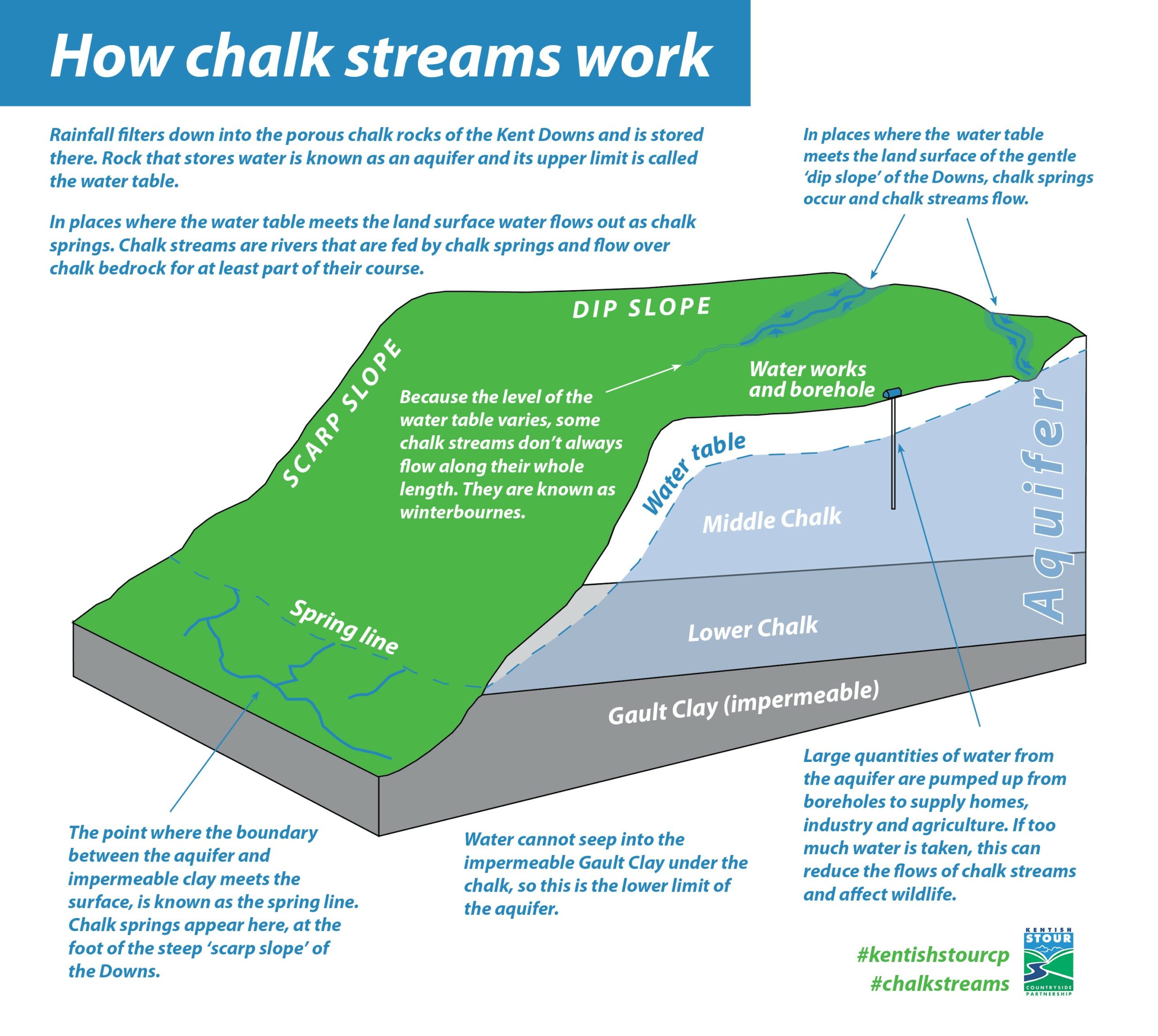
A RAINDROP’S JOURNEY
If you could follow the journey of a single raindrop, you would see it moves very slowly through the chalk. This journey could be half a mile or 50 miles long, and could take months, years, or even centuries, depending on where it travels in a complex underground network of tiny pores and larger fissures. Water can move upwards as well as down, due to pressure and capillary action.
In places where the water table meets the surface, it flows out as chalk springs. Chalk streams are rivers which are fed by these springs and then flow over chalk bedrock for at least part of their course.
HOSPITABLE WATERS
Because chalk streams are fed by an aquifer, their flow is much less related to recent rainfall, and their levels are much less variable than ordinary rivers. Spring water has been filtered by the chalk, so chalk streams are very clear, with clean, gravelly beds. The water is alkaline and full of minerals useful to living organisms. And because it is coming from underground it has very consistent temperature. These are the key characteristics of chalk streams, and these conditions make them excellent wildlife habitats.
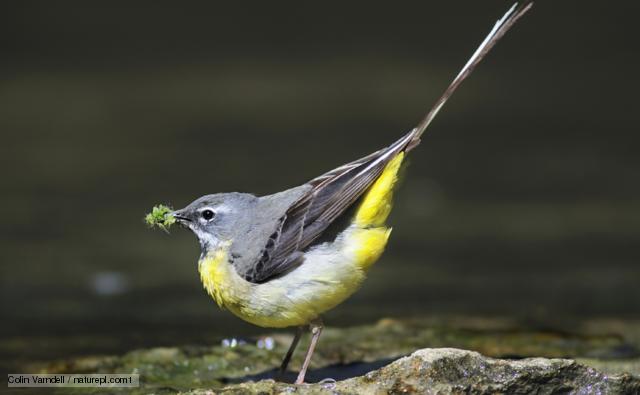
Grey wagtail – a bird characteristic of fast flowing chalk streams
AN ACCIDENT OF GEOLOGY – WHY CHALK STREAMS ARE SO RARE
Chalk streams only occur in southern and eastern England and northern France. There are chalk rocks in many other places in the world but no chalk streams. Why?
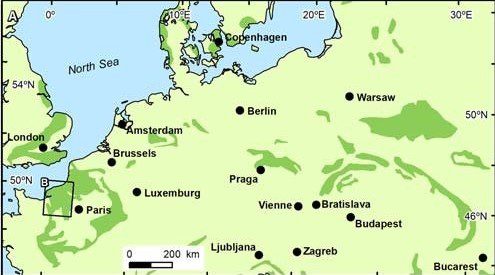
Map of chalk outcrops in Western Europe
(Source: Ballesteros, Painchault, Mouralis and Nehme)
When we look at landscapes like the Kent Downs, we feel as if they must have been that way forever. In fact, they are the product of chaotic processes constantly re-shaping the world over many thousands or millions of years.
The chalk of England and northern France was pushed up into a dome by the movement of tectonic plates between 65 and 2.5 million years ago. This dome was slowly eroded then, much later, shaped directly or indirectly by glaciers, during several Ice Ages. In many places, glaciers erode rock or leave behind thick deposits, but on our chalk, they left the rock intact and cleaned these deposits away, creating ‘polished’ chalk hills. By pure chance, this was just the right kind of glaciation to create – together with our mild, rainy climate – the perfect conditions for chalk streams. Just here, in our one fortunate corner of the world.
We have produced a poster about the characteristics of chalk streams. It is free to download.
Download Chalk River Characteristics poster (PDF)
